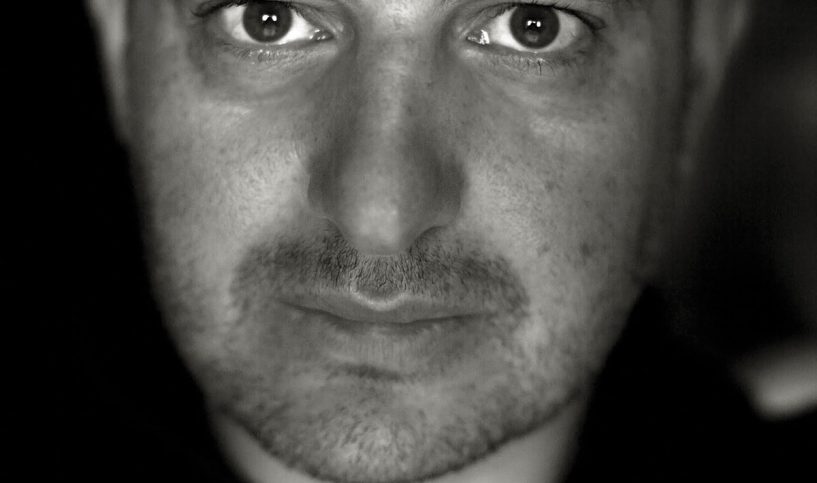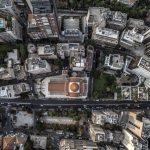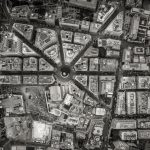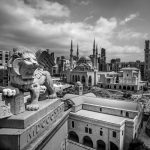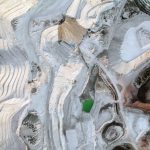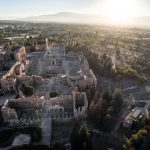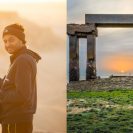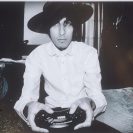Beirut-born photographer Christian Ghammachi’s passion for photography spans over twenty-five years and has led him on epic adventures all around the world. With his latest photography series-turned-coffee-table-book titled Rise Above Lebanon, we not only experience the beautiful Levantine nation literally from a different perspective, we also observe how this beautiful country endures.
Printed in an elegant square format on 170 grm paper containing 192 pages, Rise Above Lebanon went from a simple video project commissioned by the country’s Ministry of Tourism to become a true national treasure and an artistic collectible. Lebanon’s Minister of Tourism wrote the foreword, while the photographs depict a Lebanon captured from above over a period of five months from last summer. It includes aerial views of cities, rural villages, picturesque places, festivals and even sports events.
Christian seeks out the less obvious and the overlooked, and his artistic eyes lead him to find beauty in hidden elements and emotions. He is inspired by resilience as a phenomena and a concept, and seeks this in people, landscapes and wildlife alike. He is particularly interested in creating photographs that show beauty and enduring passion despite adversity. Christian’s portfolio depicts a wealth of experience, as his travels have led him to to travel to Africa, The Middle East, Nepal, Cuba, the United States and Europe.
Christian’s photographs have gained recognition over the years, and have been published widely. A collection of his works –19 Years Later – was published in 2010 and won the Dubai International Prints achievement award in 2011. He has showcased his work on several occasions in the Middle East and Europe. We sit down with Christian to learn more about Rise Above Lebanon.
Hi Christian! Please introduce yourself to our readers.
I am both French and Lebanese and lived in Kuwait from 1998 to 2007 after which I moved to Bahrain and then South Africa. I practiced law for many years before setting it aside to focus on my photography and my first quest for images was one across Africa on a motorbike, by myself, which lasted for 6 months.
It was during this period that I discovered that I also enjoyed videography, as well as the beauty of aerial photography and videography by using drones.
When did you first become interested in photography?
I was 18, studying law in Lebanon and stole my father’s camera because I was curious about how this device could make beautiful images. I slowly taught myself by reading and finding photos I liked and trying to replicate them and investing a lot of time in the process.
Your journey with photography has led you all around the world. Could you tell us more about your favorite photography trip and why this experience stayed with you more than other trips?
Nepal and Cuba come to mind immediately because they are extremely beautiful and colorful places but also because they are resilient nations. What people are capable of achieving there, and the level of content in spite of the adversity that each nation faced is so beautiful and inspiring.
The most memorable adventure would certainly have to be my trip across Africa on a motorbike, titled ‘Two Wheels Across”. Nothing compares to the feeling of discovering so many incredible things on a daily basis for six months, across 16 countries and 20,000 kilometers!
What inspires your photography?
The less obvious, I look for things that people have not noticed, or for angles they have not seen. I search for emotion in everything I capture, be it in an expression, a face or landscape, and I try to draw lines in my photos that pull the viewer into the image, moment and emotion.
I had written in the introduction to my first book 19 Years Later that if a photo fails to move you, then it has failed as an artwork and is then merely a photocopy, documenting a moment or place.
You are particularly interested in creating photographs that show beauty and enduring passion despite adversity. Could you please elaborate on this?
I feel that we live in a world where the obvious beauty is in our face all the time and we tend to ignore the things that are less evident. If it is not a beautiful woman in a movie or magazine, a sports car or piece of jewelry, we are less likely to notice it.
It is with this in mind that my focus and artwork evolved in 2007, when I decided to look for the less obvious. This drove me to look elsewhere, which pushed me to travel even more. I believe there is so much more emotion and beauty in an old man’s face, his wrinkles, expressions and wisdom, than there will ever be on a fashion model’s face.
Does the ‘rise above’ project exemplify this notion?
In a way it does, Lebanon is a beautiful country in more ways than one. This is something we tend to forget because of all the strife that his nation endures on a daily basis. I tried to show Lebanon like we had never seen it before, from a different perspective. My goal was to remind us of the country’s beauty, wealth and diversity.
When did you start utilizing the drone to take pictures and why? How did you compose these photographs?
It was during my ‘Two Wheels Across’ journey in Africa. I had taken a drone with me and it allowed me to capture incredible footage of the continent. This specific drone however was not great for stills and it is only when I purchased newer ones after Africa that I started capturing photos in the quality that I desired.
For Rise Above Lebanon, I was commissioned by the Ministry of Tourism to produce a short destination video and was therefore roaming around the country filming with the drone. The video is now in post-production.
I obviously couldn’t resist the temptation to capture still photos! Whenever I flew the drone to capture videos, I would take the time to compose photos as well. The drones are very stable and I often call them flying tripods. This allowed me to frame my shots exactly the way I wanted and clicking the button.
How did your series of ‘rise above’ photographs evolve into a book?
I created the Instagram account @riseabovelebanon and started posting photos as the journey across Lebanon unfolded. The reaction was immediate and amazing. People started reposting my photos everywhere, the followers increased significantly and are now at about 7,000 throughout a period of 6 months.
I felt compelled to print the photos into a book, because books have something that social media lacks: longevity.
A book of beautiful images will stay on a coffee table and will be viewed by people again and again through years, whereas a photo posted on social media will often be forgotten within days.
How do you connect with your followers and fans?
In many ways, they write to me on social media or email me, I have met with a few and have invited everyone to a talk on the day of my book launch this December.
What has been their feedback to the latest ‘rise above’ series?
The main comments have been “I didn’t know this existed”, or “this is how it looks like from above?”. I have also often been complimented on reminding people that Lebanon is indeed beautiful, especially during this time of turmoil.
Will you take the ‘rise above’ project to an international scale?
Yes, without a doubt. ‘Rise Above’ is a great concept. I have been speaking with the Tourism Board of a number of countries about replicating the concept and there seems to be a lot of interest. Drone Technology, combined with an artistic outlook, have paved the way to do projects like this.
For more information you can check out @riseabovelebanon on Instagram.

